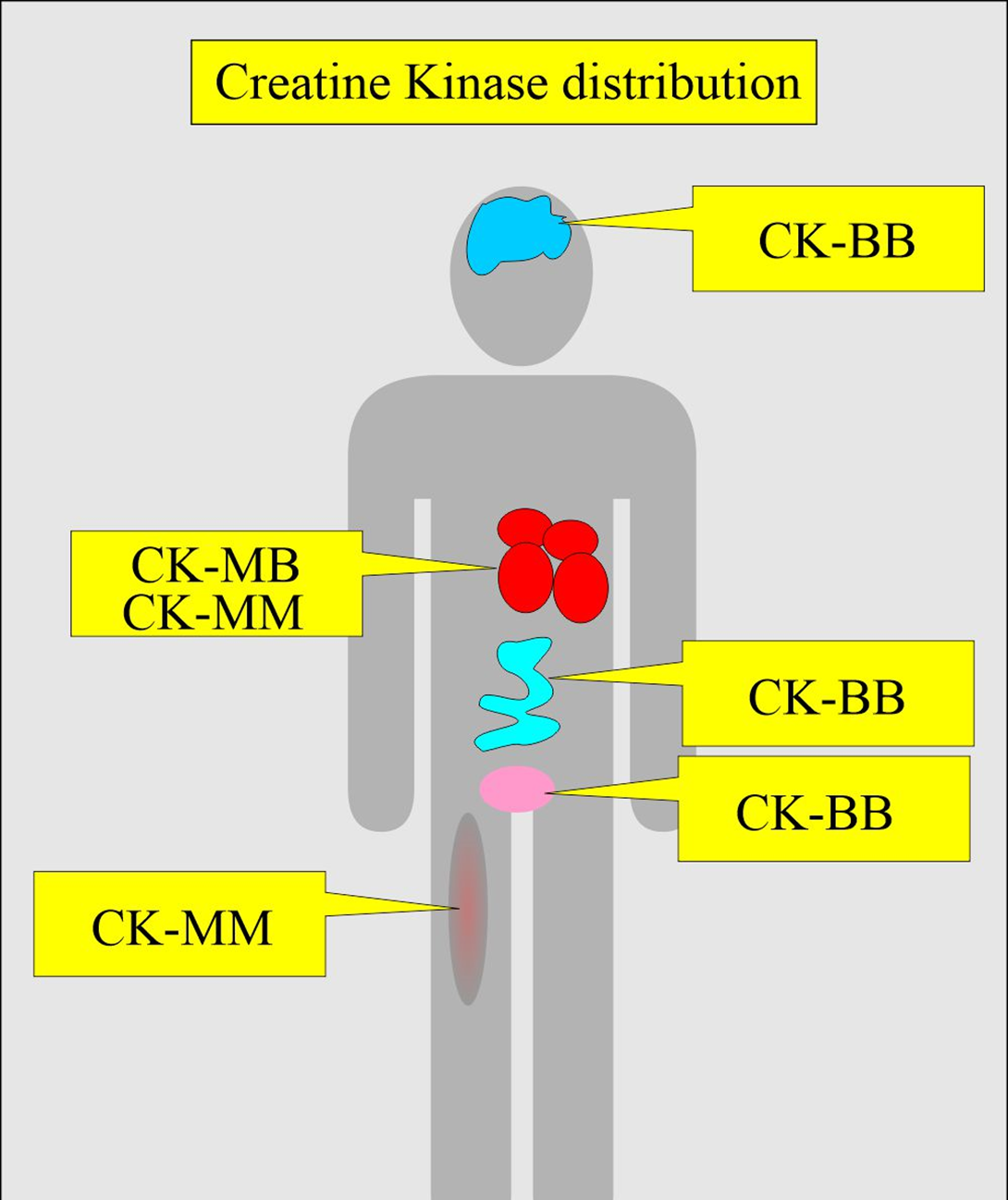A client taking atorvastatin develops an increased serum creatine phosphokinase (CK) level. The nurse should assess the client for the onset of which problem?
Muscle tenderness.
Nausea and vomiting.
Excessive bruising.
Peripheral edema.
The Correct Answer is A
Choice A reason: Muscle tenderness is a sign of myopathy, a rare but serious adverse effect of atorvastatin and other statins. Myopathy is characterized by muscle weakness, pain, and elevated CK levels. CK is an enzyme that is released when muscle tissue is damaged. The nurse should monitor the client for muscle tenderness and report any changes to the prescriber.
Choice B reason: Nausea and vomiting are common side effects of atorvastatin, but they are not related to CK levels. The nurse should advise the client to take the medication with food and fluids to minimize gastrointestinal discomfort.
Choice C reason: Excessive bruising is not a typical side effect of atorvastatin, nor is it associated with CK levels. The nurse should assess the client for other possible causes of bleeding, such as coagulation disorders, trauma, or drug interactions.
Choice D reason: Peripheral edema is not a common side effect of atorvastatin, and it is not related to CK levels. The nurse should assess the client for other signs of fluid retention, such as weight gain, shortness of breath, or jugular venous distension. The nurse should also check the client's blood pressure and heart rate, as peripheral edema may indicate heart failure or hypertension.

Nursing Test Bank
Naxlex Comprehensive Predictor Exams
Related Questions
Correct Answer is D
Explanation
Choice A reason: Decreasing pain and burning during urination is not the purpose of probenecid, which is a drug that lowers the level of uric acid in the blood. Probenecid is used to treat gout, a condition that causes painful inflammation of the joints due to the accumulation of uric acid crystals. Probenecid does not have any effect on the urinary tract or its symptoms.
Choice B reason: Increasing the strength of the urine stream is not the purpose of probenecid, which is a drug that increases the amount of uric acid in the urine. Probenecid works by blocking the reabsorption of uric acid by the kidneys, thus increasing its excretion. Probenecid does not have any effect on the bladder or its function.
Choice C reason: Preventing the formation of kidney stones is not the purpose of probenecid, which is a drug that can actually increase the risk of kidney stones. Probenecid increases the concentration of uric acid in the urine, which can lead to the formation of uric acid stones. The nurse should instruct the client to drink plenty of fluids and avoid foods high in purines, such as organ meats, seafood, and alcohol, to prevent kidney stones.
Choice D reason: Promoting excretion of uric acid in the urine is the purpose of probenecid, which is a drug that reduces the level of uric acid in the blood. Probenecid helps prevent gout attacks by preventing the buildup of uric acid crystals in the joints. The nurse should monitor the client's serum uric acid level, renal function, and urine output, and advise the client to take the medication with food to avoid stomach upset.
Correct Answer is B
Explanation
Choice A reason: This is not the correct time to collect the peak and trough levels. The peak level should be measured after the completion of the IV dose, not during the administration. The trough level should be measured just before the next administration, not 30 minutes before.
Choice B reason: This is the correct time to collect the peak and trough levels. The peak level should be measured one hour after the completion of the IV dose, when the concentration of the medication is highest in the blood. The trough level should be measured one hour before the next administration, when the concentration of the medication is lowest in the blood.
Choice C reason: This is not the correct time to collect the peak and trough levels. The peak level should be measured one hour after the completion of the IV dose, not two hours after. The trough level should be measured one hour before the next administration, not two hours before.
Choice D reason: This is not the correct time to collect the peak and trough levels. The peak level should be measured one hour after the completion of the IV dose, not immediately after. The trough level should be measured one hour before the next administration, not 30 minutes before.
Whether you are a student looking to ace your exams or a practicing nurse seeking to enhance your expertise , our nursing education contents will empower you with the confidence and competence to make a difference in the lives of patients and become a respected leader in the healthcare field.
Visit Naxlex, invest in your future and unlock endless possibilities with our unparalleled nursing education contents today
Report Wrong Answer on the Current Question
Do you disagree with the answer? If yes, what is your expected answer? Explain.
Kindly be descriptive with the issue you are facing.
